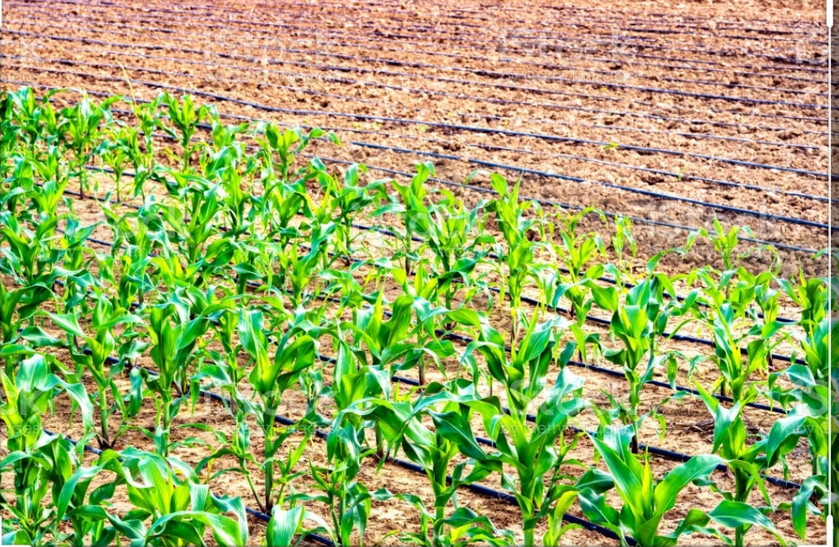By Darlington Mutsvairi

In a bid to curb the perennial food insecurity in the country resulting from the persistent normal to below normal rainfall, Government introduced a conservation agriculture concept in which approximately 1.8 million vulnerable households are expected to immensely benefit.
Pfumvudza program as the concept is widely known was initiated by the government as a migratory measure on the food insecurity situation in the country, a manifestation of low productivity. The program is part of the Government’s Agriculture Recovery Plan.
Without meaningful production it means government has to import grain which will result in straining the fiscus and heavy reliance on donor funding.
In a statement released mid last month by the Ministry of Agriculture, Government said, “The low productivity has led the country to be a perennial net importer of grain to meet local demand, increasing pressure on the fiscus to source foreign currency for grain importation, which could be channelled to other productive sectors of the economy”.
The Government attributed the low productivity to a wide range of factors such as but not limited to poor rainfall, prolonged mid-season and early cessation of the rains and poor agronomic management practices.
In realising that these factors continuously affect especially small scale farmers, the Pfumvudza program was brought in to make sure that production will not be negatively impacted on by somewhat commercialising the small scale farmers. This has since started and will see the method being implemented in the forthcoming 2020/21 summer agricultural season.
How does Pfumvudza operate?
The Permanent Secretary in the Ministry of Agriculture Dr John Bhasera said that the program has three key principles which are minimum or zero tillage, maintenance of organic mulch cover on the soil surface and the use of cop rotation and interactions that include legume crops.
A specialist in the Agriculture research department of the ministry, Miss Rutendo Nhongonhema said, “a farmer is required to do potholing measuring 145cm dip to be the moisture banks as they maintain moisture in the dry spell mid-season ensuring the crop does not suffer from moisture stress.
“Farmers are required to use mulch which is also a method which supress weeds besides conserving moisture”, she further said.
This would be done on a plot size measuring 16m x 39m which translate to 624m2, with 75cm inter-row spacing, in-row of 60cm and row length of 16m.
There must be 28 holes per row where two maize plants would be sowed totalling to 56 plants per row resulting to 1 456 planting holes with 2 912 in a 52 row plot.
Every farmer is expected to establish three of such plots, two of which caters for cereals and one for one legume crop such as sunflower or soya-bean.
The Ministry added that each farmer is required to establish three plots; two plots with cereal crop (maize or traditional grains), one of which would provide for the farmers’ food self-sufficiency, and production from the second plot will be sold to the Grain Marketing Board (GMB) to contribute to the National Strategic Grain Reserves.
On the third plot, farmers in the high potential areas will receive soyabean seed, while those in the low potential areas will receive sunflower seed that the farmer can sell-off to earn income.
What is the expected yield?
If they adhere to the principles of the model, the farmers will enjoy a lucrative grain output out of this Pfumvunza model.
Dr Bhasera added that out of the 52 rows in each plot, each row will produce a 20-litre tin of maize grain and this is enough for week’s sustenance for an average family of five. This simply means that one plot can feed an average family of five for one year.
Dr Basera further said that the assumption would be an achievement of at least one cob per plant, an average of 15 tonnes per hectare.
How Does Government Intend to achieve this?
The Ministry reported that all the 4 500 Agricultural extension workers across all provinces have been trained on the concept. As such most farmers have since received training and currenlty employing knowledge acquired.
A total of 298 563 farmers (64 625 male, 99 678 female) have so far been trained by the extension workers as at 10 July 2020.
The reported figures are expected to go higher as the farmer training and establishment of pfumvudza plots is ongoing work in progress.
All the Agricultural extension officers (madhumeni) are to establish demonstration plots where farmers will learn from.
Timeline of operations was put in place to make sure that the Pfumvudza model becomes a success.
“To ensure adequate preparedness by the farmers, holing must be done by August 31, mulch harvesting by August 31, input issuance between September and October 31 and planting by second week of November”, said the ministry.
The Government took it upon itself for the provision and distribution of the inputs that will cover the three plots.
It was also noted that the programme will support over 1.8 million vulnerable households for maize, sorghum and oilseed crops (soyabean and sunflower) with a standardised input package of 5kg seed, 12 kg lime, 50kg basal and 50kg top dressing fertilizers as well as pesticides for control of fall armyworm.
What Are The Benefits of the Pfumvunza Model?
If religiously followed, especially taking into consideration the three principles highlighted by Dr Bhasera, both farmers and the environment will benefit in a positive ways from this model.
Zero or no tillage reduce moisture loss at the same time improving soil structure in the long run so disturbances would be minimal.
Mulch can be done using tree leaves or grass and by so doing, it means water run-off is reduced because of reduction in intense rainfall impact on the soil and reversely, evaporation is reduced.
It also reduces the impact of temperature fluctuations at the soil surface therefore resulting in smothering weeds.
The third principle highlighted by Dr Bhasera is the inclusion of legume-based rotation which improves soil fertility, reduce pest infestation and total crop loss is minimised in case of severe weather.



